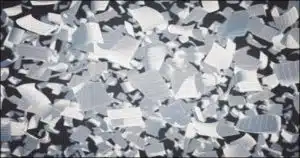CHKDSK (standing for Check Disk) and Defrag are different tools for different purposes. When it comes to CHKDSK, it doesn’t matter what type of drive you have; it won’t harm the drive the way a defrag might harm an SSD.
Let’s look at why that is. In fact, I’ll see if I can’t extend one of my metaphors – perhaps to the point of breaking – to clarify what’s going on.
Defrag: scattered pages
To summarize from a previous article (What is ‘defragging’ and why should I do it?):
Imagine you have a book, but the pages are randomly scattered throughout your house. You have a list of where each page is, so when you want to read your book, you go find page 1, then you look on the list for page 2 and go to that, then look up page 3, and so on. To read your book in order, you’re racing around the house, because the pages are all over.
That’s a fragmented file – lots of “fragments” scattered all over the disk. It takes time to do all that running around to read the book from beginning to end.
Defragmenting is nothing more than the hard disk equivalent of collecting up all the pages and putting them next to each other, in order, for every book on your shelf.
Defragging an SSD: wearing out the paper
Let’s say that all the pages of your books, while still very much scattered about, are within reach. You can reach any page you need very quickly – almost as quickly as if they were organized into their original page-after-page book form. In fact, they’re so close, there’s really no point in rearranging them at all; you wouldn’t really be able to access them any faster. You can read them quickly.

Let’s say you want to rearrange them back into their book form anyway, and you set about “defragging” the pages.
The mere act of shuffling the pages around to get them back in order causes friction. (Remember, this is a metaphor – there’s no friction in a real SSD.) That friction causes each piece of paper to get a little thinner each time you move it (write it to disk).
Eventually, the paper crumbles and you lose its contents completely.
I hope you have a backup.
Takeaway: defragging an SSD drive is not a good idea.
Defragging a hard drive: schlepping stone tablets
Now let’s say that each page of your book is carved into a stone tablet. It’s heavy, slow to read, and slow to move around, but it’s exceptionally durable.
That’s your traditional spinning-platter hard disk drive (HD or HDD). It’s slower than an SSD, but “rock” solid.
Since those tablets are so heavy to find and move, you really would prefer that the pages of your books be one after the other, so they’re easy to locate and handle.
Since the stone lasts essentially forever, there’s no reason not to take the time every once in a while to put them back in order. It makes sense to defrag your slower stone tablet books, because it’ll make reading them much easier.
Takeaway: defragging traditional hard disks is good practice.
CHKDSK: Checking the pages
CHKDSK has nothing to do with where the pages of your books are, or even whether they’re paper or stone.
CHKDSK is mostly1 about each book’s Table of Contents. It locates each Table of Contents, reads through it, and makes sure all the pages for each chapter can be found. If not (and if you’ve specified the /F “fix it” option), CHKDSK will update the Table of Contents the best it can to reflect what’s missing. In techspeak, CHKDSK verifies that files are stored on disk properly and fixes logical file system errors.
Occasionally, CHKDSK finds missing pages, doesn’t know to which book they belong, and sets them aside in a separate book, just in case they happened to be important.
CHKDSK vs Defrag
They key difference here is that CHKDSK does a lot more reading than writing. In fact, most often CHKDSK only reads data, confirming that everything’s fine. Where it needs to fix something, the write is very small and very quick.
That’s in contrast to Defrag, which is constantly writing data as it moves your “pages” around to put them in order.
In short:
- Defrag should only be done on actual hard disks, not SSDs.
- CHKDSK can happen on any kind of disk.
When to run each
In recent versions of Windows, Defrag runs automatically once a week, and only on the drives for which it makes sense. That’s plenty. You needn’t do a thing more.
CHKDSK is something that, quite frankly, I ignore unless I experience a problem or have some reason to suspect there’s something wrong CHKDSK might find and fix. Running CHKDSK on a disk – any disk – that has no problems is completely benign.
It’s important to note that CHKDSK will never cause a problem. At its worst, it more explicitly exposes problems that were there all along… and that’s a good thing.
Do this
Subscribe to Confident Computing! Less frustration and more confidence, solutions, answers, and tips in your inbox every week.
I'll see you there!
Podcast audio



What a perfect metaphor for defragging!
This article is a prime example of why I love “Ask Leo”. What a perfectly clear explanation of defragging! Thank you!!!
what about auto Trim. Most defragmentation recognize and provide Trim for SSD. Should we let these apps run in the background “auto Trim” mode? E.g. SmartDefrag?
Thank you for this important clarification and distinction! I just got an SSD and it is FAST! I want to keep it that way. Thank you!
What is TRIM
It’s an instruction to an SSD that allows it to optimize / clear areas no longer in use. More here: https://en.wikipedia.org/wiki/Trim_(computing)